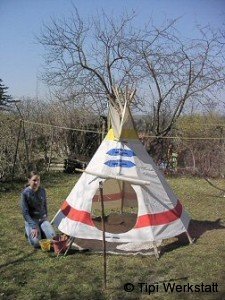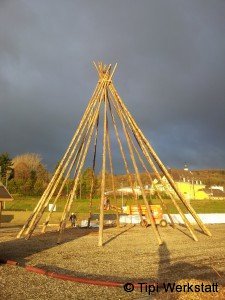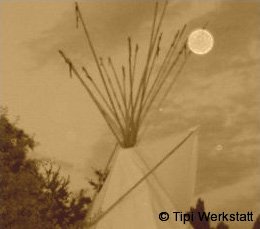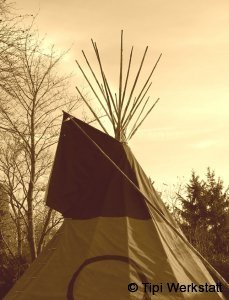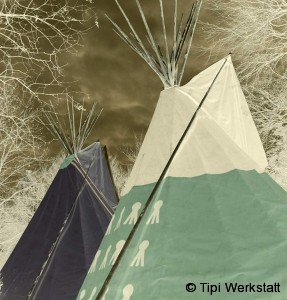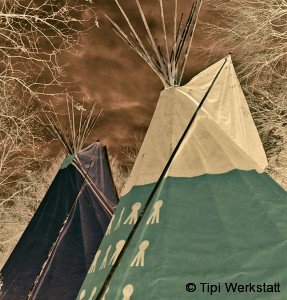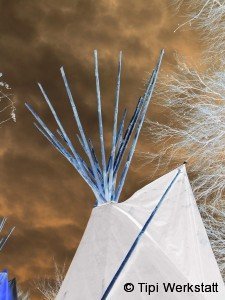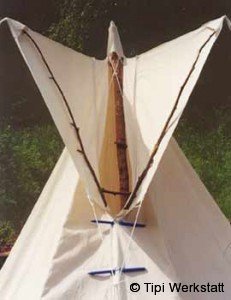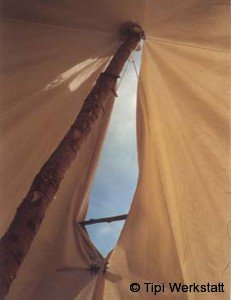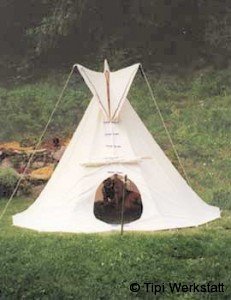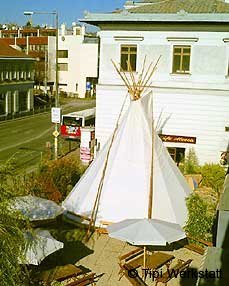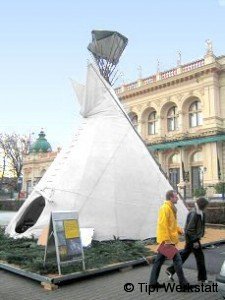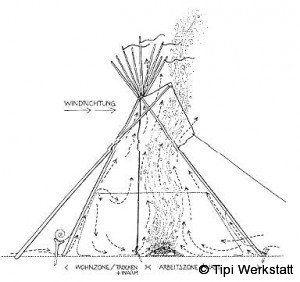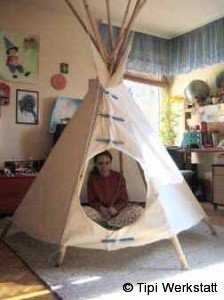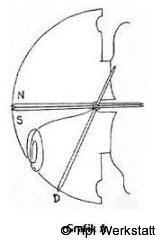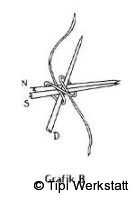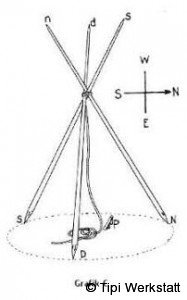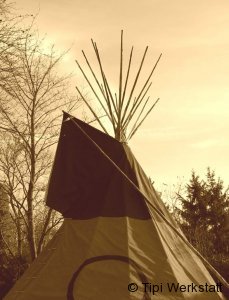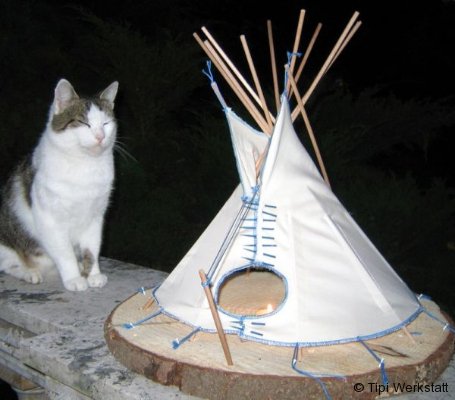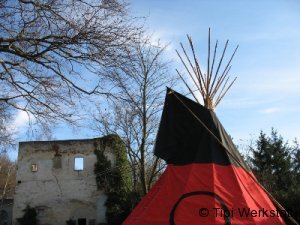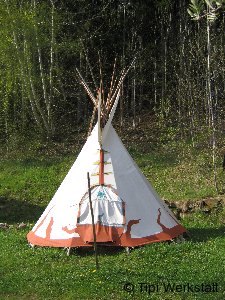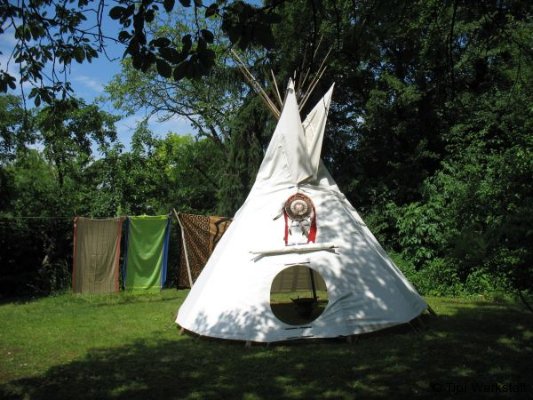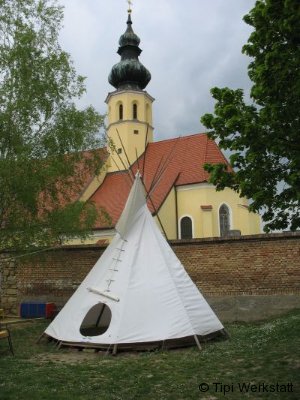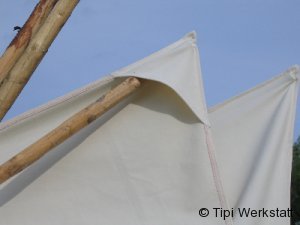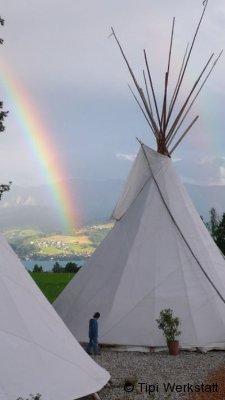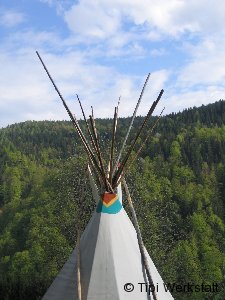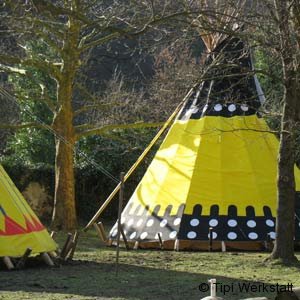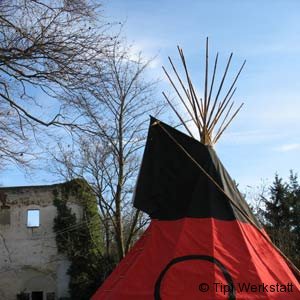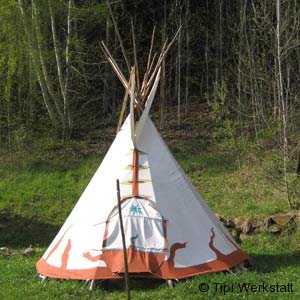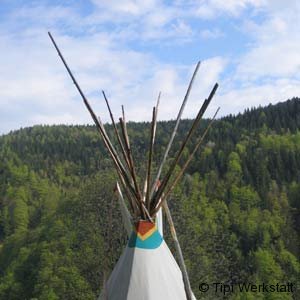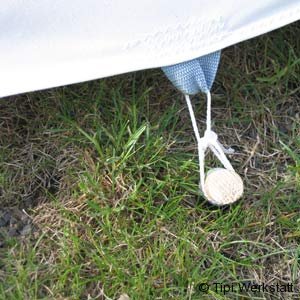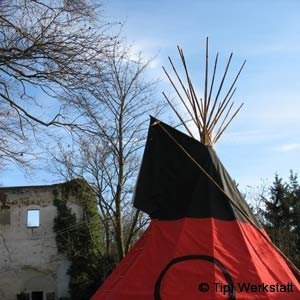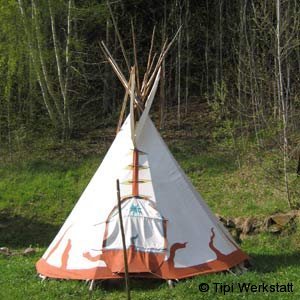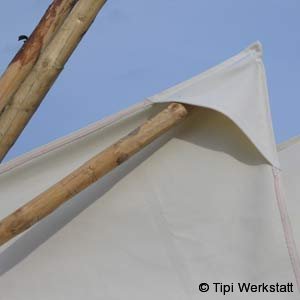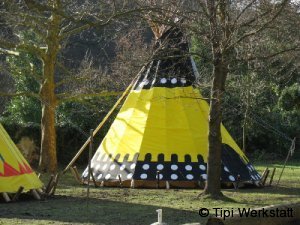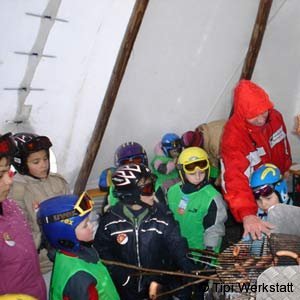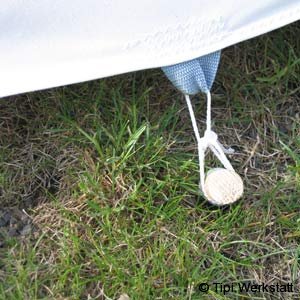Geschichten rund um´s Tipi
| Der Alltag der traditionell lebenden Indianer und damit der Tipialltag ist voller Symbolik. Das wohl bekannteste Symbol ist das des Kreises. So wie das Kind in das „Rund“ des Tipis geboren wurde, verläuft das Leben des Menschen in einem Kreislauf aus Werden und Vergehen. Die Menschen saßen im Kreis um das Feuer und auch die Tipidörfer wurden in Kreis- oder Halbkreisform aufgebaut.Lange bevor das Pferd in Nordamerika (wieder) heimisch wurde, lebten Indianer in den typischen Kegelzelten. Den größten Teil des Jahres aber verbrachten sie in festen Wohnstätten, meist Erdbehausungen oder rindengedeckten Unterkünften je nach Gebiet und Stammesunterschieden. Die Völker bauten Kürbisse, Bohnen und vor allem Mais an, sammelten Beeren, Pilze und Kräuter und jagten allerlei Kleingetier. Nur wenn es auf Büffeljagd ging, also im Frühjahr und Herbst, zogen sie den imposanten Tieren nach und lebten in Tipis.Mittels vergleichsweise größeren Hunden als die damals in Europa lebenden wurden die Behausungen transportiert. Die Stangen der Tipis wurden kreuzweise auf die Hunde gebunden und diese schleppten dann solche, bis zu 6 Meter lange, sogenannte „Travois“ nach. Auf die wurden dann die Zelthaut und die andere Habe gepackt. |
In der ersten Hälfte des 17. Jahrhunderts kam dann durch die spanischen Eroberer erst das Pferd auf, was den Völkern ermöglichte, dem Büffel überallhin zu folgen. Binnen kurzer Zeit wurden nun die zumeist sesshaften Völker zu vollen Nomaden, auch die an der Ostküste lebenden Stämme, die sehr früh unter der Ankunft der Europäer zu leiden hatten. Interessanterweise wurden die Indianer erst jetzt zu hauptsächlichen Fleischessern, da neben dem Trockenfleisch ja nun auch das mit den „Weißen“ getauschte Salz in großen Mengen zur Konservierung zur Verfügung stand. Neben dem Fleisch wurde das restliche Tier zur Gänze verwertet. Aus den Häuten wurden Zelte, Bekleidung, Vorratsbehälter und Zaumzeug gefertigt. Für Nähzeug, Garn und Bogenbespannung dienten Sehnen. Aus den Knochen und Horn wurde Werkzeug wie Schaber, Ahlen, Nadeln sowie Schmuck hergestellt. Das Gehirn schließlich ermöglichte das Gerben der Häute ( Gehirn ist gerbsäurehältig).Die Tipihaut wurde weißgegerbt, wodurch es im Inneren angenehm hell und freundlich war. Bereits im vorigen Jahrhundert wurde das Bisonleder durch weißes Leinen ersetzt. Die Imprägnierung erfolgte durch 24 Stunden langes Räuchern des Stoffes, indem im Feuer innerhalb des Zeltes grüne harzige Tannen- und Fichtenzweige verbrannt wurden. Der fette Ruß machte so den Stoff wasserundurchlässig. |
Das Tipi ist wahrscheinlich das am klügsten durchdachte Nomadenzelt, das in vollkommener Harmonie mit der Natur steht.
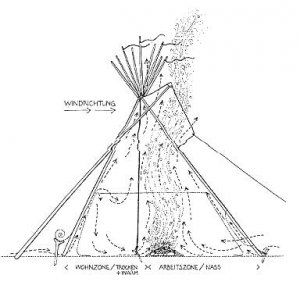
Es ist kein mathematischer Kegel, sondern etwas geneigt, da das Zelt hinten einen steilen und vorne einen flachen Winkel aufweist.
So stemmte sich das Tipi gegen den in der Prärie vom Westen kommenden Wind.
Hauptsächlich also deshalb und wohl erst an zweiter Stelle aus rituellen Gründen wurde der Eingang nach Osten angelegt. Die Feuerstelle rückt so aus der Mitte heraus unter die Rauchklappen, die den Hauptunterschied zu anderen Nomadenzelten
darstellen. Durch die beiden kaminartigen Stoffbahnen entsteht ein optimaler Rauchabzug. Außerdem ergibt sich durch das Nichtzentrieren der Feuerstelle im hinteren Zeltbereich großzügigerer Wohnraum. Mit den beiden außenstehenden Rauchklappenstangen kann der „Kamin“ nach Windrichtung und Feuergröße gut ausgerichtet werden. Bei Regen wird eine Rauchklappe seitlich über die Zeltöffnung gespannt, innen bleibt es trocken und warm und der Rauch kann S-förmig abziehen.
Für die kalte Jahreszeit wird innen in ca. 1,40 m Höhe (je nach Tipigröße) ein sogenanntes „Innenlining“ eingehängt, das im Gegensatz zum Außenzelt bis zum Boden reicht und dort mit Steinen beschwert wird. So sitzt man zugfrei und in klarer Luft auch bei Außentemperaturen bis minus 15 oder 20 Grad im Warmen.
Und auch heute noch kann ein Abend im Tipi; auch und besonders bei Regen oder Schnee am warmen Feuer im Kreis der Familie oder Freunden; ein unvergessliches Erlebnis sein….

